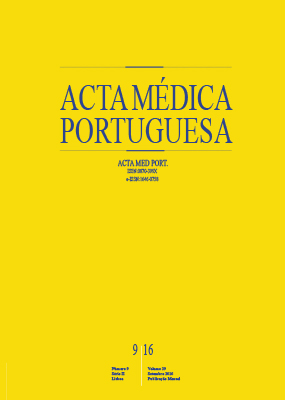Schwannoma of the Upper Extremity: Retrospective Analysis of 17 Cases
DOI:
https://doi.org/10.20344/amp.6906Keywords:
Hand, Neurilemmoma, Soft Tissue Neoplasms, Upper Extremity.Abstract
Introduction: Schwannoma or neurilemmoma is a benign peripheric nerve tumor that usually presents as a slow growing single lesion; it has origin in Schwann cells proliferation. Although it represents a small percentage of the benign tumors of the upper arm, it is the most frequent of neural origin. We present a retrospective study of upper limb schwannomas; our aim is establish the appropriate preoperative approach, to recognise the efficiency of the treatment and the pos-operative follow-up.
Material and Methods: Review of 17 patients treated between 2007 and 2014 with upper limb schwannoma and characterization as to age, gender, location in the upper limb, signs and symptoms, pre-operative studies, histologic diagnosis and postoperative surveillance.
Results: In four of them the schwannoma was localized on the arm, three on the forearm, four on the wrist and 6 on the hand or fingers. We proceed to careful microsurgical dissection in a bloodless field to optimize the functional final result. The enucleation without fascicular lesion was achieved in 12 patients. In five patients we performed the excision of the fascicles involved by the mass. Nine patients developed paresthesias in the immediate postoperative period, with five of them improving in 12 months. One patient presented motor deficit of the radial nerve with partial recover at 12 monts.
Discussion: Schwannomas are rare tumours with well circumscribed morphology. Occasionally it appears in upper limb. The preoperative
diagnosis is rarely, so normally the diagnosis is established only after excision and histologic study.
Conclusion: Schwannoma should be considered as a diagnostic hypothesis when evaluating subcutaneous nodes associated with
neurologic symptoms. It is important to query the presence of paresthesias and perform the Tinel sign, both typical of this condition.
Imagiological exams have a scarce contribute in the diagnosis. To improve the final result, the preoperative study must be insightful, being advisable to consider the benefits of the surgery compared to the potential iatrogenic damage to the nerve.
Downloads
Downloads
Published
How to Cite
Issue
Section
License
All the articles published in the AMP are open access and comply with the requirements of funding agencies or academic institutions. The AMP is governed by the terms of the Creative Commons ‘Attribution – Non-Commercial Use - (CC-BY-NC)’ license, regarding the use by third parties.
It is the author’s responsibility to obtain approval for the reproduction of figures, tables, etc. from other publications.
Upon acceptance of an article for publication, the authors will be asked to complete the ICMJE “Copyright Liability and Copyright Sharing Statement “(http://www.actamedicaportuguesa.com/info/AMP-NormasPublicacao.pdf) and the “Declaration of Potential Conflicts of Interest” (http:// www.icmje.org/conflicts-of-interest). An e-mail will be sent to the corresponding author to acknowledge receipt of the manuscript.
After publication, the authors are authorised to make their articles available in repositories of their institutions of origin, as long as they always mention where they were published and according to the Creative Commons license.









